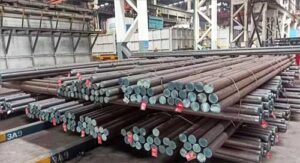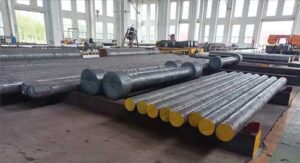When it comes to materials that can withstand extreme heat and pressure, few can match the exceptional qualities of hot work tool steel. In the world of manufacturing and engineering, this specialized steel alloy plays a pivotal role in a wide range of applications. In this comprehensive article, we will delve into the diverse applications and distinct advantages of hot work tool steel, shedding light on why it’s a vital component in various industries.
1. Introduction
Hot work tool steel is a specialized steel alloy that thrives in high-temperature environments, making it indispensable in various industrial sectors. Its unique composition and properties enable it to maintain strength and durability under extreme heat and pressure conditions.
2. Composition and Properties
Alloying Elements
Hot work tool steel is carefully engineered with alloying elements such as chromium, tungsten, molybdenum, and vanadium. These elements impart specific characteristics to the steel, including heat resistance, wear resistance, and toughness.
Heat Resistance
One of the hallmark features of hot work tool steel is its exceptional heat resistance. It remains robust and reliable even when subjected to temperatures well above 600°C (1112°F).
Wear Resistance
Hot work tool steel exhibits outstanding wear resistance, making it ideal for applications that involve abrasive and high-friction conditions. This property prolongs tool life and reduces maintenance costs.
Toughness
Despite its remarkable hardness, hot work tool steel maintains good toughness, ensuring that it can withstand sudden, high-stress loads without fracturing.
3. Applications of Hot Work Tool Steel
Die Casting
Hot work tool steel is a go-to choice for manufacturing die casting molds. Its high thermal conductivity and wear resistance are essential attributes for ensuring the quality and precision of die-cast components.
Forging
In the forging industry, hot work tool steel plays a critical role in forging dies. Its ability to endure extreme temperatures and pressure without losing its properties is invaluable in producing high-quality forged products.
Extrusion
Extrusion processes, which involve shaping materials by forcing them through a die, rely heavily on hot work tool steel. Its capacity to maintain its integrity under the intense pressures and temperatures involved is indispensable.
Plastic Molding
Hot work tool steel is utilized in the plastic molding industry for creating molds used in injection molding. Its resistance to wear and heat ensures the longevity and precision of molds, contributing to cost-effective production.
Glass Manufacturing
In the glass industry, hot work tool steel is employed in applications such as glass blowing and glass container production. Its ability to withstand extreme temperatures and maintain dimensional stability is crucial for producing high-quality glass products.
Aerospace Industry
The aerospace sector benefits from hot work tool steel due to its high-temperature resistance and versatility in tooling. It is used in manufacturing critical components for aircraft and spacecraft.
4. Advantages of Hot Work Tool Steel
High Heat Resistance
Hot work tool steel can endure temperatures well beyond the capabilities of conventional steels, ensuring consistent performance in high-temperature environments.
Exceptional Wear Resistance
Its exceptional wear resistance minimizes tool wear, leading to longer tool life and reduced downtime for maintenance.
Improved Toughness
Despite its hardness, hot work tool steel maintains excellent toughness, making it less susceptible to fractures and failures under extreme conditions.
Dimensional Stability
Hot work tool steel exhibits minimal distortion during heat treatment, ensuring the precise dimensions of the final product.
Versatility in Tooling
The versatility of hot work tool steel in tooling applications makes it a preferred choice for industries that demand precision, reliability, and cost-effectiveness.
5. FAQs
Frequently Asked Questions About Hot Work Tool Steel
Q1. What distinguishes hot work tool steel from cold work tool steel?
Hot work tool steel is designed for high-temperature applications, while cold work tool steel is intended for lower-temperature applications with an emphasis on wear resistance.
Q2. Can hot work tool steel be customized for specific applications?
Yes, hot work tool steel can be heat-treated and alloyed to meet specific performance requirements for different applications.
Q3. Are there different grades of hot work tool steel available?
Yes, various grades of hot work tool steel are tailored to specific industries and operating conditions, offering a range of properties and performance characteristics.
Q4. What safety precautions should be taken when working with hot work tool steel?
Safety measures include proper ventilation when machining, using appropriate personal protective equipment, and adhering to storage guidelines to prevent accidents.
Q5. Is hot work tool steel used in non-industrial applications?
Yes, hot work tool steel is employed in artistic and creative applications such as sculpture and glass art due to its ability to withstand the high temperatures involved in these processes.
In conclusion, hot work tool steel is a remarkable material with a diverse range of applications and distinct advantages. Its ability to withstand extreme temperatures, resist wear, maintain toughness, and provide dimensional stability makes it an essential component in industries where precision, reliability, and efficiency are paramount. Understanding the applications and advantages of hot work tool steel is crucial for industries seeking to elevate their performance and produce high-quality products in demanding environments.

